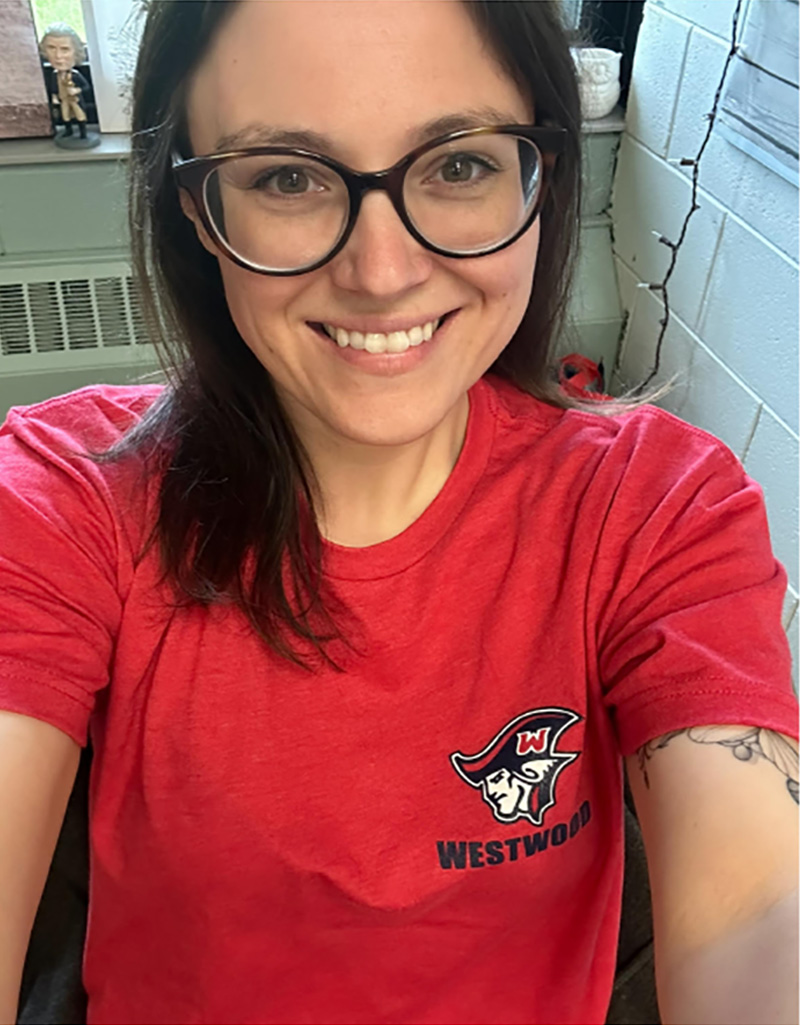
Created by Cara Anderson
Biography:
Cara Anderson teaches 11th and 12th grade English at Westwood High School. She also is a contingent instructor for NMU and currently teaches EN 111/211 to concurrent high school students.
Title of Lesson: Exploring Native American Identity, Culture, and Community
Subject Area: English
Grade Level: 11
Approximate Time to Do Unit: 3-4 Weeks
Approximate Time to Do Lesson: 50 Minute Lessons
Tags: AIM, American Indian Movement, Red Power, Civil Rights, Wounded Knee
Overview: This unit will focus on exploring Native American traditions and identity through poetry, narrative, and art that was published in the Nishnawbe News. Students will use their critical literacy skills to analyze and explore multiple creative expressions and perspectives in order to find commonalities and differences within the selected texts. Through their exploration, students will develop a thesis of what it means to be Native American during this time period (1970s) and also how those identities may still hold true today. In order to connect this lesson to the present, students will also contemplate their own identity and community and how identity and culture can shift and evolve over time. Students will use structured inquiry in order to explore the question: How is identity and culture explored through creative expression? How does identity and culture evolve over time? Through the exploration of Native American creative expression texts and individual inquiry, students will then branch out and also explore the questions: What is my identity? What are some facets of my community’s identity? How is my individual identity connected to my community’s cultural collective identity? Lastly, students will compose their own creative expressions using the poetry, narratives, and art provided in the Nishnawbe News to reflect their findings.
Standards Addressed:
- CCSS.ELA-LITERACY .RL.11-12.1 Cite strong and thorough textual evidence to support analysis of what the text says explicitly as well as inferences drawn from the text, including determining where the text leaves matters uncertain.
- CCSS.ELA-LITERACY .RL.11-12.2 Determine two or more themes or central ideas of a text and analyze their development over the course of the text, including how they interact and build on one another to produce a complex account; provide an objective summary of the text.
- CCSS.ELA-LITERACY . W .11-12.3 Write narratives to develop real or imagined experiences or events using effective technique, well-chosen details, and well-structured event sequences.
- CCSS.ELA-LITERACY . W .11-12.4 Produce clear and coherent writing in which the development, organization, and style are appropriate to task, purpose, and audience. (Grade-specific expectations for writing types are defined in standards 1-3 above.)
- CCSS.ELA-LITERACY . W .11-12.5 Develop and strengthen writing as needed by planning, revising, editing, rewriting, or trying a new approach, focusing on addressing what is most significant for a specific purpose and audience. (Editing for conventions should demonstrate command of Language standards 1-3 up to and including grades 11-12 here.)
- CCSS.ELA-LITERACY . W .11-12.6 Use technology, including the Internet, to produce, publish, and update individual or shared writing products in response to ongoing feedback, including new arguments or information.
- CCSS.ELA-LITERACY . W .11-12.7 Conduct short as well as more sustained research projects to answer a question (including a self-generated question) or solve a problem; narrow or broaden the inquiry when appropriate; synthesize multiple sources on the subject, demonstrating understanding of the subject under investigation.
- CCSS.ELA-LITERACY . W .11-12.8 Gather relevant information from multiple authoritative print and digital sources, using advanced searches effectively; assess the strengths and limitations of each source in terms of the task, purpose, and audience; integrate information into the text selectively to maintain the flow of ideas, avoiding plagiarism and overreliance on any one source and following a standard format for citation.
- CCSS.ELA-LITERACY . W .11-12.9 Draw evidence from literary or informational texts to support analysis, reflection, and research.
Modifications for Diverse Learning Needs:
- Equal access to both written and visual texts.
- Audio Recordings or read-alouds of written texts for students with reading-related IEPs.
- Break lessons down into small segments when needed to help guide students focus.
- Encourage students to embrace diverse perspectives and freely explore their identities and their relationship (or lack thereof) with the community, without imposing preconceived ideas.
- Trauma-informed practices: Be prepared for potential trauma-related discussions or triggers due to events that may have occurred within the lived experiences of students and/or the community.
Lesson Objectives:
- Students will use critical literacy skills to analyze Native American poetry, narratives, and art that was published in the Nishnawbe News.
- Students will explore multiple creative expressions in order to evaluate commonalities and differences within the texts and how that relates to individual identity and community culture.
- Students will develop a thesis statement regarding what it meant to be Native American during the 1970s, based on their analysis of the creative texts within the Nishnawbe News.
- Students will articulate how historical identities may resonate in contemporary Native American communities.
- Students will reflect on their own identity and community while considering how identity and culture can change over time.
- Students will connect their personal identity to broader cultural collective identities within their community through research, interview, and oral tradition.
- Students will compose original creative expressions (i.e. poetry, narratives, art) using the Nishnawbe news as mentor text in order to demonstrate their understanding of their own individual identity and their connection to their community and community culture.
Download the Lesson Plans and Support Files Below
- Unit Plan: Exploring Identity, Culture, and Community (document)
- Days 1-4: Exploring Native American Tradition and Identity through Creative Expression_(document)
- Days 5-9: Exploring Individual Identity and Community Culture through Inquiry & Oral Tradition (document)
- Days 10-14: Creative Expression of Individual Identity and Culture (document)
- Inquiry Questions (document)
- Creative Expression of Individual Identity and Culture Summative Assessment (document)
- Nishnawbe News Guided Analysis Assignment (document)
- Research and Interview Assignment Exploring Community Identity (document)

